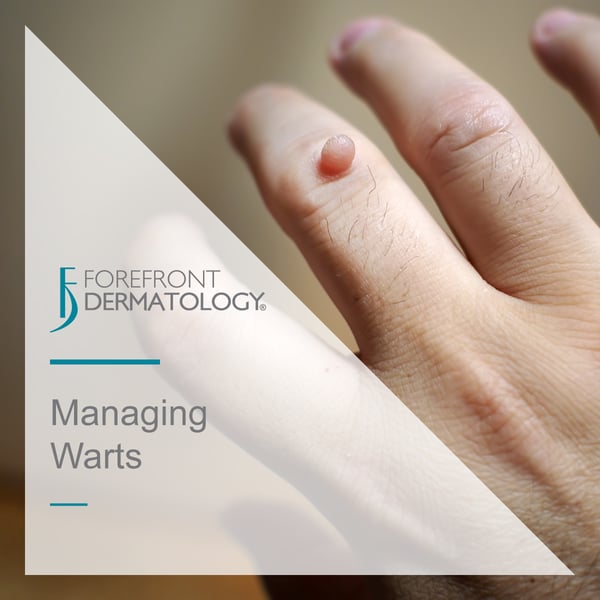
Warts are an infection of the skin caused by the human papillomavirus (HPV). The virus enters the body through a break in the skin, such as a cut. It then forms a rough bump on the surface of the skin. According to Dr. Marjorie F. Yang, board-certified dermatologist with Forefront Dermatology, “Anyone can get warts, but children are at higher risk due to their likelihood of cuts and scrapes. The elderly are also at an increased risk due to a weakened immune system. Warts are extremely contagious and can spread from direct or indirect contact.”
Appearance and Symptoms
Warts commonly appear on the hands and sole of the feet. Plantar warts – warts on the feet – are the most common type because of their location. People who get plantar warts may feel as if they have a stone in their shoe. Because of their flat appearance and location, plantar warts are frequently mistaken for calluses. Like calluses, plantar warts have tough, thick skin. However, unlike calluses, a plantar wart is painful when squeezed. A plantar wart may also have black dots on its surface. These dots are from enlarged blood vessels in the wart.
Prevention and Management
“Warts may go away on their own as the immune system fights off the HPV virus,” added Dr. Yang. “However in order to reduce the chances of warts coming back, they must be removed completely. This requires daily home treatment, either alone or in combination with treatments by a board-certified dermatologist.”
- At Home Treatment
Salicylic acid is an over-the-counter product used to treat warts. It comes in a gel or liquid, or as a patch. To treat a wart, soak the affected area in warm water for 15 to 20 minutes to soften the skin. After soaking, use a disposable emery board to file down the wart. Throw away the emery board after use. After filing, dispose of the emery board and apply the salicylic acid to the wart. Repeat this treatment every night until the wart is gone.
- Medical treatment
There are several approaches the dermatologist may choose from to treat a wart. Treatment is done on an outpatient basis, meaning the patient goes home the day of the treatment. Medical treatment options may include cryotherapy, injections, topical medications (prescription and/or over the counter), or laser therapy.
When it comes to prevention, there is no foolproof method, but there are steps you can take to reduce your odds. Dr. Yang recommends the following tips for wart prevention:
- Wear flip flops or sandals when you use a public locker room, public pool area, or public showers.
- Do not touch or come in contact with another person’s wart.
- Do not scratch or pick at a wart.
- Do not shave over a wart.
- Keep items that may come into contact with the wart away from others in the house. This may include clothing or towels.
Skin Struggles?
At Forefront Dermatology, we know that life is all about the moments when you don’t need us. That’s why we’re here for all the moments when you do. We offer comprehensive and compassionate care for all skin conditions and create customized treatment plans for all ages – even the tiniest of patients! Find a location near you today.





